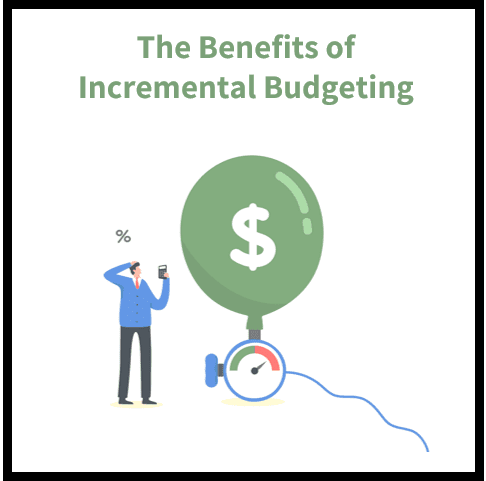In this digital age, when budget management has become so much more complicated than it used to be, it’s no wonder that the concept of budgeting is struggling. In a world where new apps are being released every day and user preferences are constantly changing, it’s getting increasingly difficult for users to really grasp the concept of budgeting.
The process of budgeting has also evolved over time to account for various factors like inflation and taxes that make each individual’s finances look different than they did even just a year ago. With all these changes, businesses have been left with two choices: either they abandon their commitment to a systematic approach to financial management or they start looking for ways around the old system.
If you are wondering which option is right for your business and your team? You aren’t alone! Many SME owners have asked themselves the same thing, and as a result, we have seen many organizations turn toward an alternative form of budgeting called Incremental Budgeting
What is Incremental Budgeting?
Incremental budgeting is the process of allocating resources to projects or tasks in a manner that is not all-or-nothing. This concept is often misunderstood. When someone says “incremental budgeting,” they may mean that money is spent “one dollar at a time.” In reality, though, an incremental approach to budgeting doesn’t have anything to do with dollars. What it means is that in deciding how much to allocate toward a project or task, you consider all the factors that influence your bottom line, including revenue, expenses, and time.
It’s important to note that when we say that “allocation” is the key difference between incremental and traditional budgeting, we don’t mean that the two are exactly the same. As we’ll highlight later, there are key differences between the two approaches.
Credit: https://www.indinero.com/wp-content/uploads/2021/04/Business-Budget.png
How Incremental Budgeting Works in Practice?
To begin, you create a budget that includes a timeline for each of your projects. Then, as you progress through the timeline, you will allocate as much or as little budget as you would like for each project. The key to an incremental budgeting approach is that you don’t set a specific amount of money each month and then hope for the best. Instead, you set a timeline for each of your projects and then proceed to allocate as much or as little budget until the project is complete.
While it’s easy to see the appeal of this method given the current state of budgeting, it’s likely that many organizations will find themselves falling into the same traps they did with traditional budgeting. For example, with traditional budgeting, many businesses found themselves overtime budgeting, undertime budgeting, or budgeting in the wrong locations. With incremental budgeting, these risks are amplified.
The Benefits of Incremental Budgeting
– Simplicity – When done right, budgeting can be a complex and difficult process. However, if done well, it can also be an easy and enjoyable one. That’s why many business owners believe that the best approach is to simplify things as much as possible. With traditional budgeting, the more complicated it is, the less likely it is that anyone will actually be using it. With incremental budgeting, on the other hand, the simpler you make things, the more likely it is that anyone will actually be using it.
– Guidance – No matter how much you try to simplify budgeting, there will always be a certain amount of ambiguity when it comes to profit and loss projections. With traditional budgeting, though, that ambiguity is often perpetuated by the fact that you are trying to apply a one-size-fits-all approach to your finances. With an incremental approach, on the other hand, you are free to apply a more personalized approach.
This means that you are able to better align your budgeting approach to your organization’s unique needs.
– Accountability – If budgeting is truly not the right approach for your business, then there’s no reason to stay committed to a process that you know will leave you flustered and confused. With traditional budgeting, though, budgeting is often misunderstood as a commitment to a certain amount of money. With incremental budgeting, however, you are able to easily and effectively communicate your commitment to your time and money allocations. This approach is especially helpful when it comes to managing employee time.
– Predictability – Perhaps the most appealing and best-known benefit of budgeting is that it can help you to predict revenue. With traditional budgeting, however, this is often a major challenge. With an incremental approach, though, you are able to easily predict revenue because it’s based on the same model that is used to forecast expenses. In this way, you are able to use budgeting to help you to predict revenue in the same way that you once used budgeting to help you to predict expenses.
The Benefits of Using an Incremental Approach
– More Accurate Project Timetables – The biggest challenge with budgeting is that it often relies on a forecast that is more creative than accurate. With traditional budgeting, though, you are often forced to rely upon your creativity to create a forecast that is likely to miss the mark. With an incremental approach, however, you are able to rely on an accurate forecast that is based on data. This means that it’s much easier to create an accurate timeline for each project.
– More Accurate Project Costs – In traditional budgeting, it’s not uncommon for budgeting to be based on estimates. This means that you may be undertime budgeting and overtime budgeting depending on the accuracy of your assumptions. With an incremental approach, though, you are able to accurately forecast costs because the forecast is based on real data. This means that you are able to properly time your projects and spend the right amount of money on each one.
– More Accurate Income Projections – Traditional budgeting often relies on revenue growth to justify project expenses. This can often result in overtime and undertime budgeting depending on the accuracy of your revenue growth assumptions. With an incremental approach, though, you are able to forecast revenue growth based on accurate assumptions. This means that you are able to forecast expenses based on accurate data.
The Downsides of Using an Incremental Approach
– More Error-Prone Project Timetables – The biggest downside of using an incremental approach is that you are much more likely to make mistakes when creating project timelines. This, in turn, means that you are much more likely to deliver projects that fall short of customers’ expectations. This, in turn, means that you will be less likely to deliver the level of revenue that you are committed to delivering.
– More Error-Prone Project Costs – The biggest downside of using an incremental approach is that you often don’t have access to the same data that is available to project managers in organizations that use traditional budgeting. This means that you aren’t able to forecast costs as accurately as project managers in organizations that use traditional budgeting can.
– Less Effective Project Timetables – The biggest downside of using an incremental approach is that you often don’t have access to the same data that is available to project managers in organizations that use traditional budgeting.
This means that you aren’t able to forecast costs as accurately as project managers in organizations that use traditional budgeting can.
– Less Effective Project Timetables – The biggest downside of using an incremental approach is that you often don’t have access to the same data that is available to project managers in organizations that use traditional budgeting. This means that you aren’t able to forecast costs as accurately as project managers in organizations that use traditional budgeting can.
How to go about implementing Incremental Budgeting
If you are committed to an incremental budgeting approach, then you will want to identify the resources that you will need in order to implement the process. For example, you will likely want to consider hiring a professional project management consultant who understands the benefits of using an incremental approach. When identifying the resources that you will need, you will want to consider the following: – Project management consultant
– You will need a project management consultant who understands the benefits of using an incremental approach.
– Project manager – You will also want to consider hiring a project manager who understands the benefits of using an incremental approach. – Project manager’s assistant
– A project manager will typically have a full-time assistant who frequently performs tasks like preparing meeting agendas, scheduling travel.






2 thoughts on “Why Incremental Budgeting May be the Right Choice for Your Business”
Can you be more specific about the content of your article? After reading it, I still have some doubts. Hope you can help me.
I don’t think the title of your article matches the content lol. Just kidding, mainly because I had some doubts after reading the article.